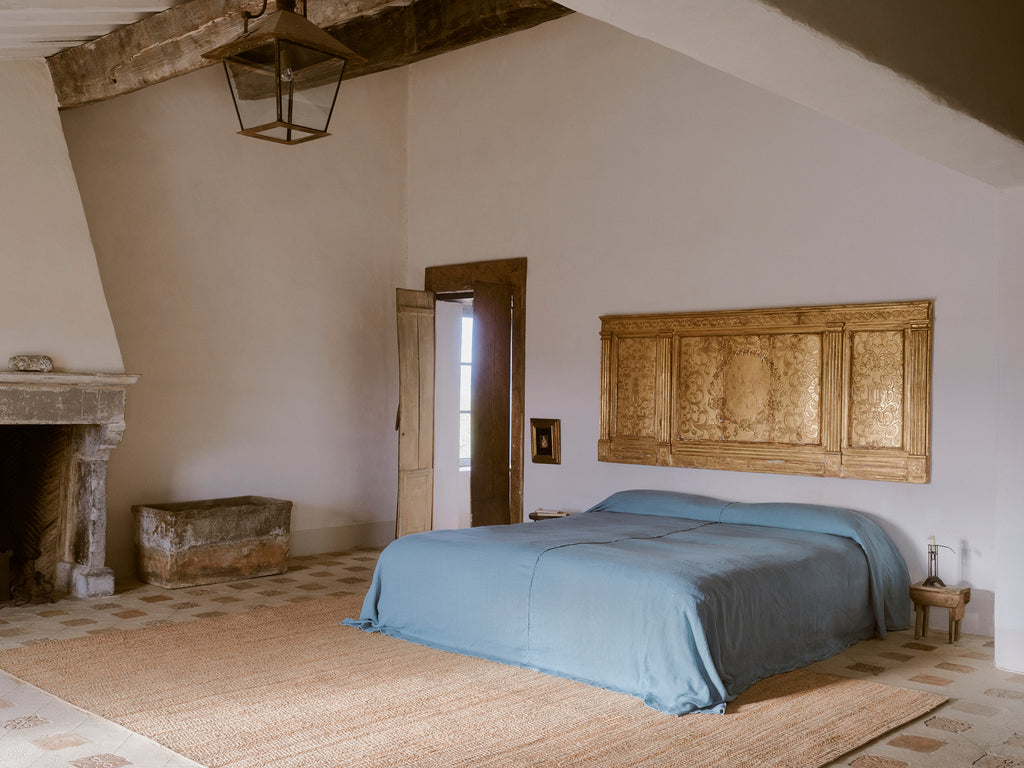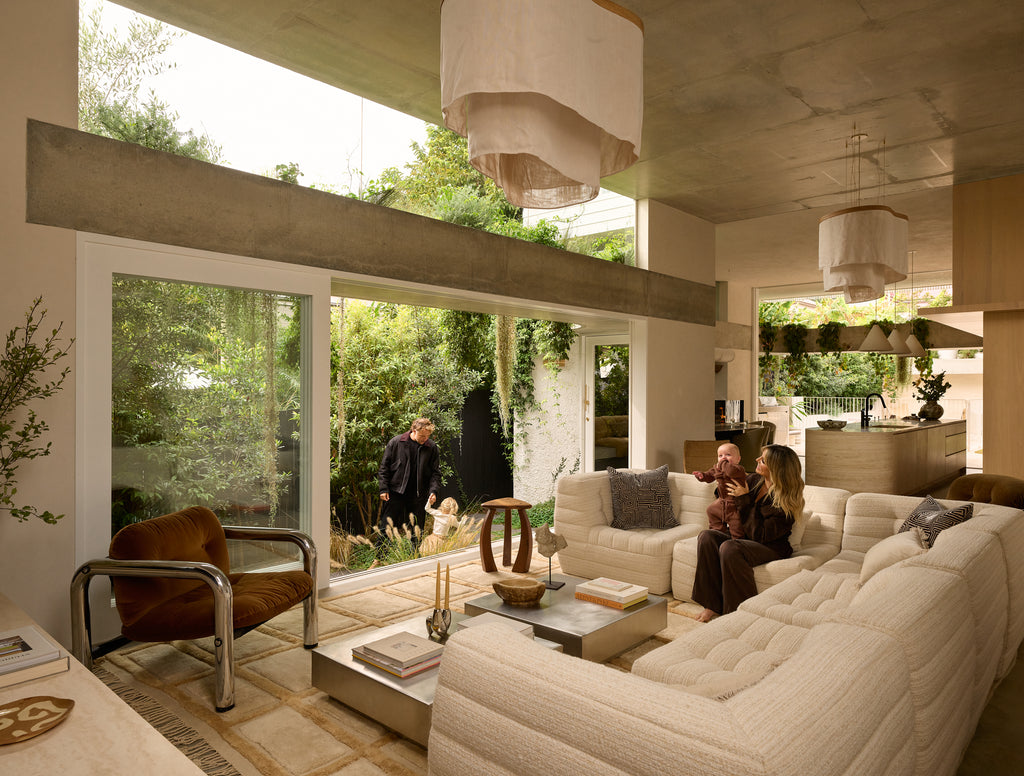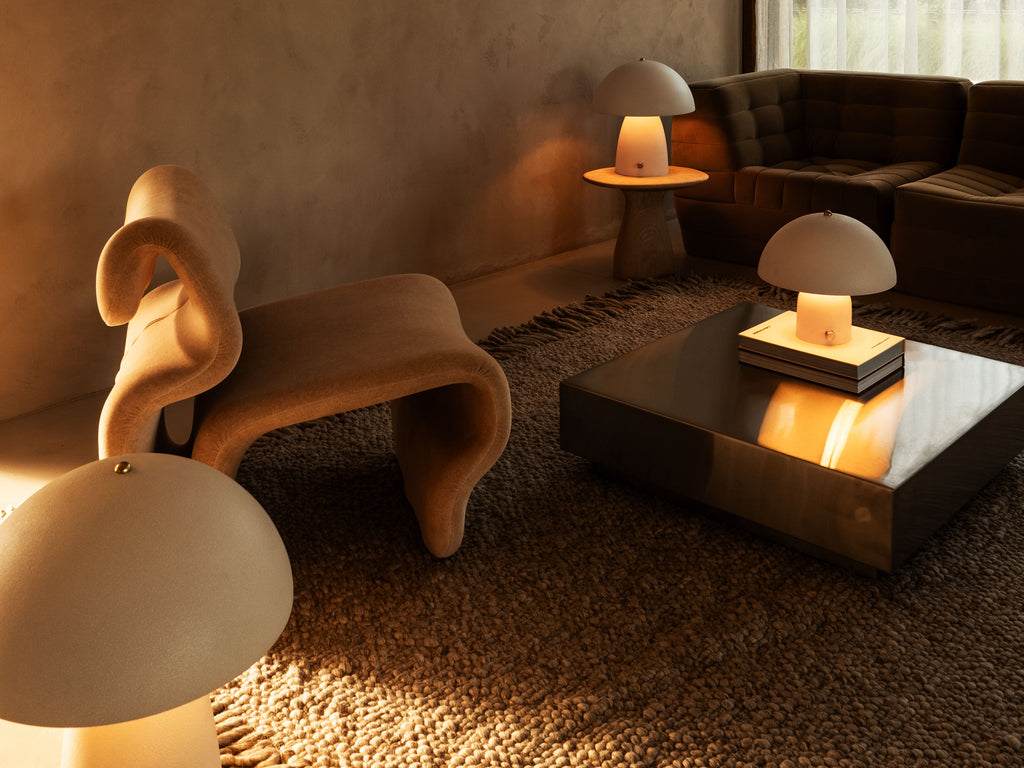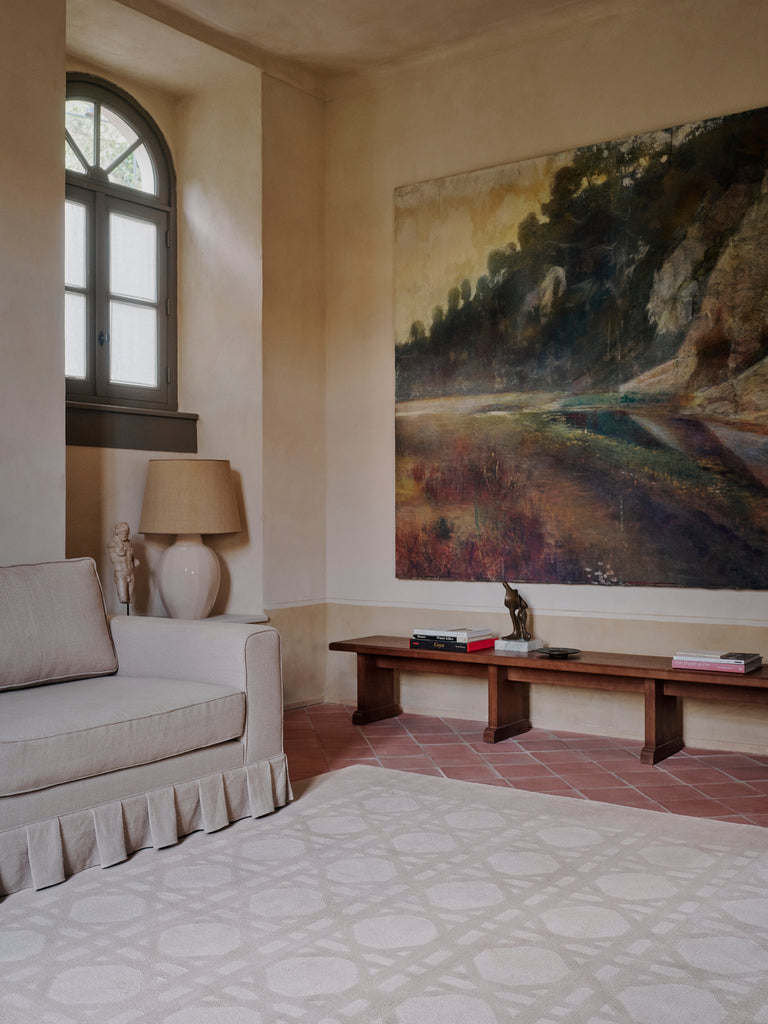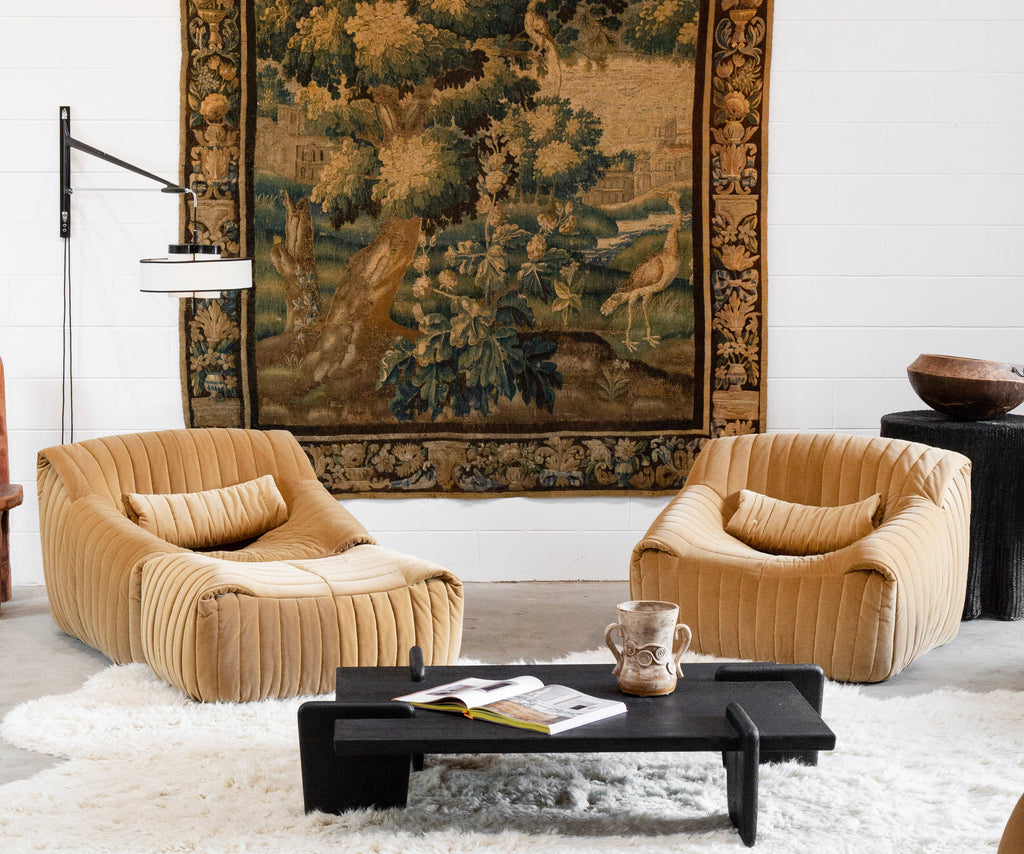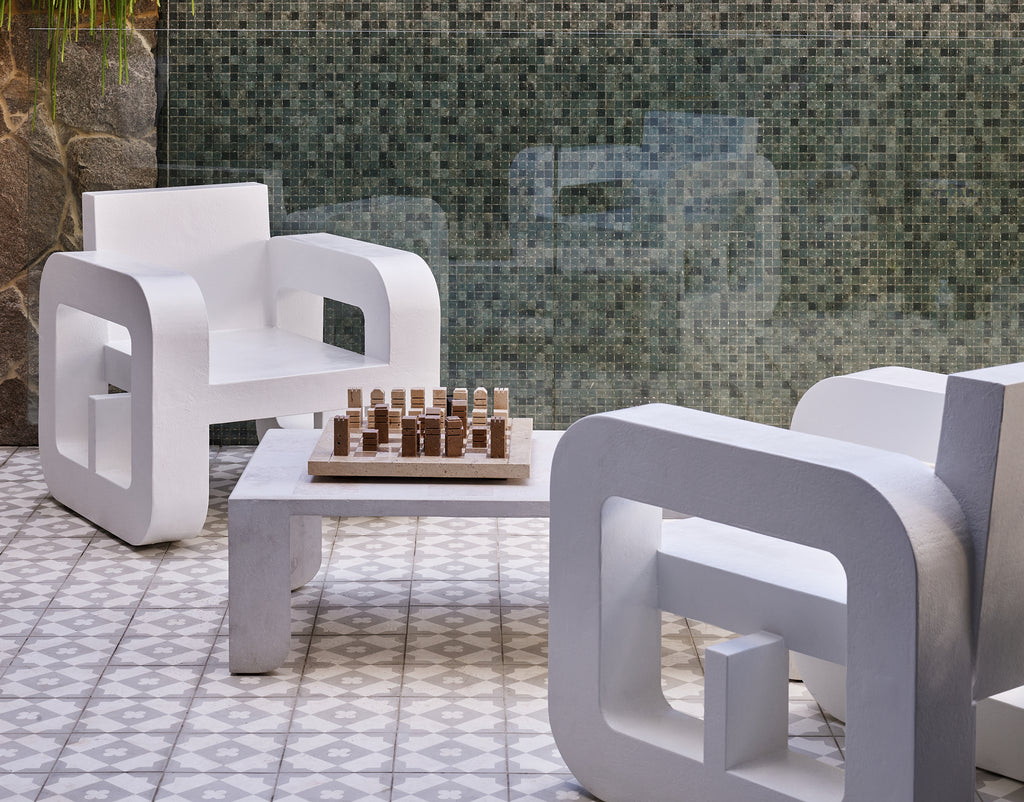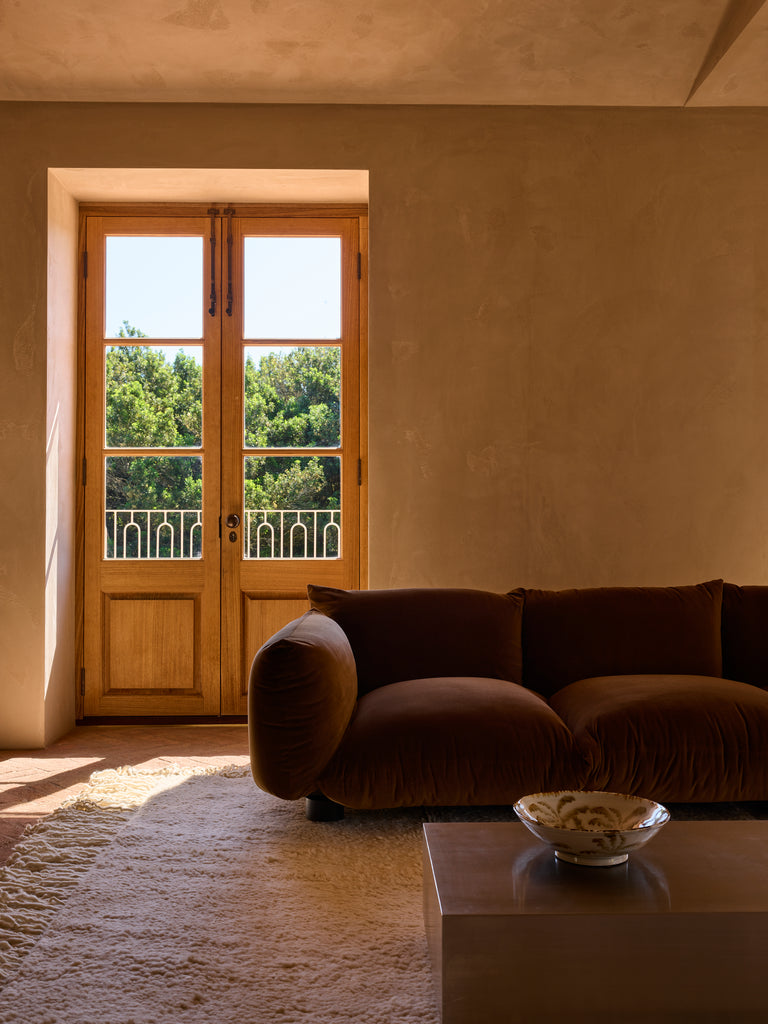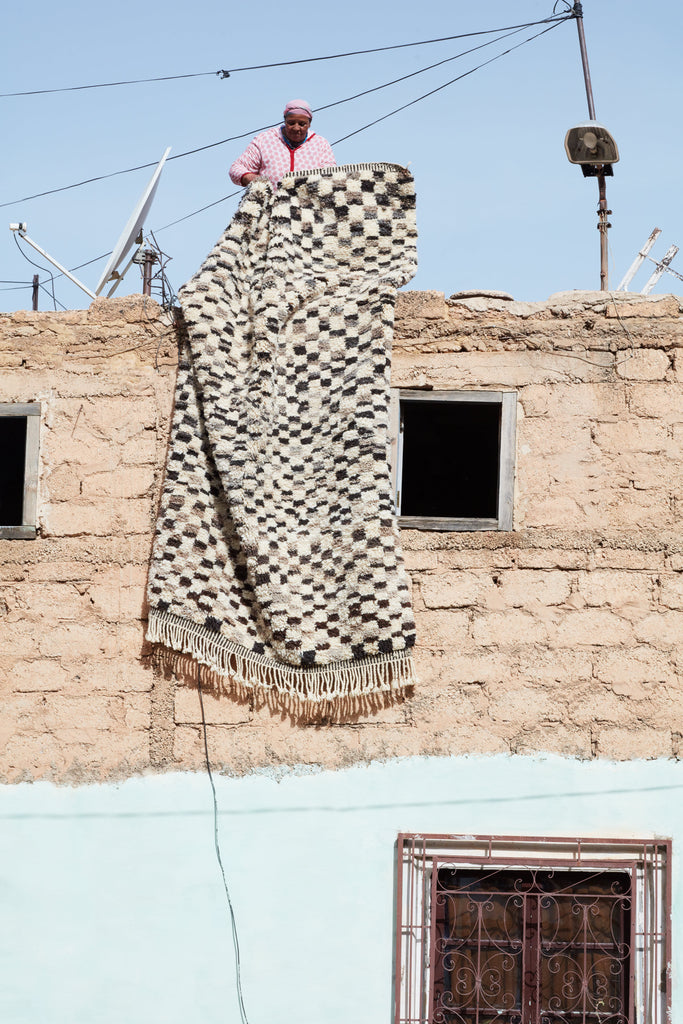
Tête-à-tête
Collections of curiosities with Saskia Folk
Deeply immersed in her art, Saskia Folk is a local creator whose pursuits have led her from the desert to the sea. Some may know her from the playful and organic ceramic pieces she creates for Tigmi, that celebrate her love for the natural world.
Exhibiting both her ‘Panel Work’ and ‘Curiosity’ collections as part of Tigmi’s Art Series, Saskia explores the colours, dents and fractures that adorn the weather-beaten vehicles that are scattered across the Australian and Californian desert.
In this series she sheds light on the beauty and stories that are encapsulated within these abandoned relics, inviting us to contemplate the connection between history, the environment and our own perception of time.
We spoke to Saskia about her creative journey that began with her grandfather's own collection of curiosities, which has led her to the desert and back again.
What is your earliest memory of creative exploration?
The beach has always been a place of freedom and creativity for me. Collecting shells, drawing in the sand, exploring rockpools and making imagined environments from what I found is a fond memory of my childhood.
My Grandfather was a collector of books, ephemera and objects of tribal and early Australian history, there were draws of curiosities at their home that I was very drawn to from an early age.
Tell us about your exhibiting art series ‘Panel Work’ and ‘Curiosities’ and what inspired them?
There are 17 panels collected from Central Australia entitled ‘Panel Work’ that I framed myself using reclaimed hardwood from my home in Brunswick Heads.
I am fascinated by the colours, textures, dents and fractures of the weather-beaten cars I came across on my journey out bush. They often appear to look like desert landscapes. Nature has created the patina over the many years they lay abandoned.
There are also 11 works on hardcover books entitled ‘Curiosity’ that combine smaller panels from the desert: rusty tins, bottle caps, shells, wood and rocks.
Both bodies of work celebrate the notion of time, history, weathering, collecting and gathering. Every object has a story of how it came to be and sourcing these took me far and wide.
Your series moves between two vastly different landscapes, the desert and the sea, what significance does this hold to you?
I love to explore country. When we are present and observe our environment, it tells a story. What is left behind forms memory of a time and place. The desert was once an inland sea, and the coastline was much further out. Weathering is constantly taking place and I am grateful to be witness to that every day.


"I bought an angle grinder after spending many hours removing a door from a car using a hand saw. This tool allowed me to select panels otherwise out of reach. There was a new level of excitement and danger."




What initially drew you to using metal as a medium?
I initially collected metal objects out in the desert and after a while began to notice the many car wrecks in the 2 remote communities, I was working in. I bought an angle grinder after spending many hours removing a door from a car using a hand saw. This tool allowed me to select panels otherwise out of reach. There was a new level of excitement and danger.
Your ceramic work can also be found in the Tigmi collection, can you draw any parallels between the processes of ceramic & metal art?
My ceramic practise is more hands on and influenced by the earthly qualities of clay. The way that different clays meld together and once fired take on a new form is similar to the weathering process of metal.
"I love to explore country. When we are present and observe our environment, it tells a story."
What qualities do you feel your artworks embody?
They evoke the natural world and are all unique one-of-a-kind pieces that tell a different story to each viewer. They are objective and part of our history.
Can you tell us about any interesting techniques or tools you use within your process?
The cordless angle grinder is not often used in art but allowed me a creative freedom. Diving in the Brunswick River for the clam shells was also an exciting part of creating this series of work.

Tigmi is Berber for ‘my home’, what do you hope your art pieces bring to the homes they are destined for?
I hope they are a talking point of difference, unlike a painting, photograph or ceramic piece. The light of day and night will change the appearance of the works and their abstract nature allows them to be easy to live with.
What does your home of the Northern Rivers bring to your work?
My home allows me to be constantly inspired. Filled with colour, art and curiosities, it is a happy place.
What’s next for you Saskia?
More ceramics, a photographic series, constant gardening, lamps. I am happy when I am being creative.
Tigmi is the exclusive stockist of Saskia Folk in Australia.
VIEW SASKIA FOLK COLLECTION


